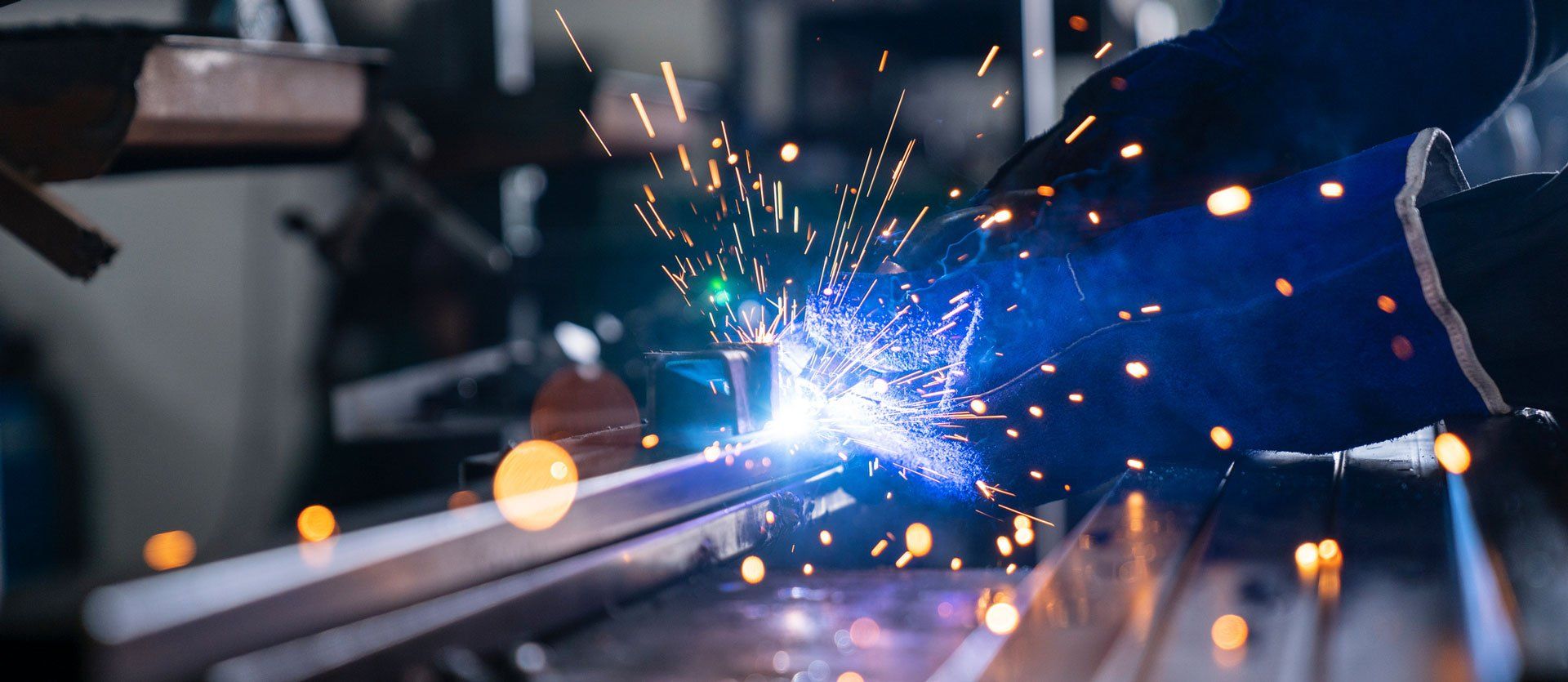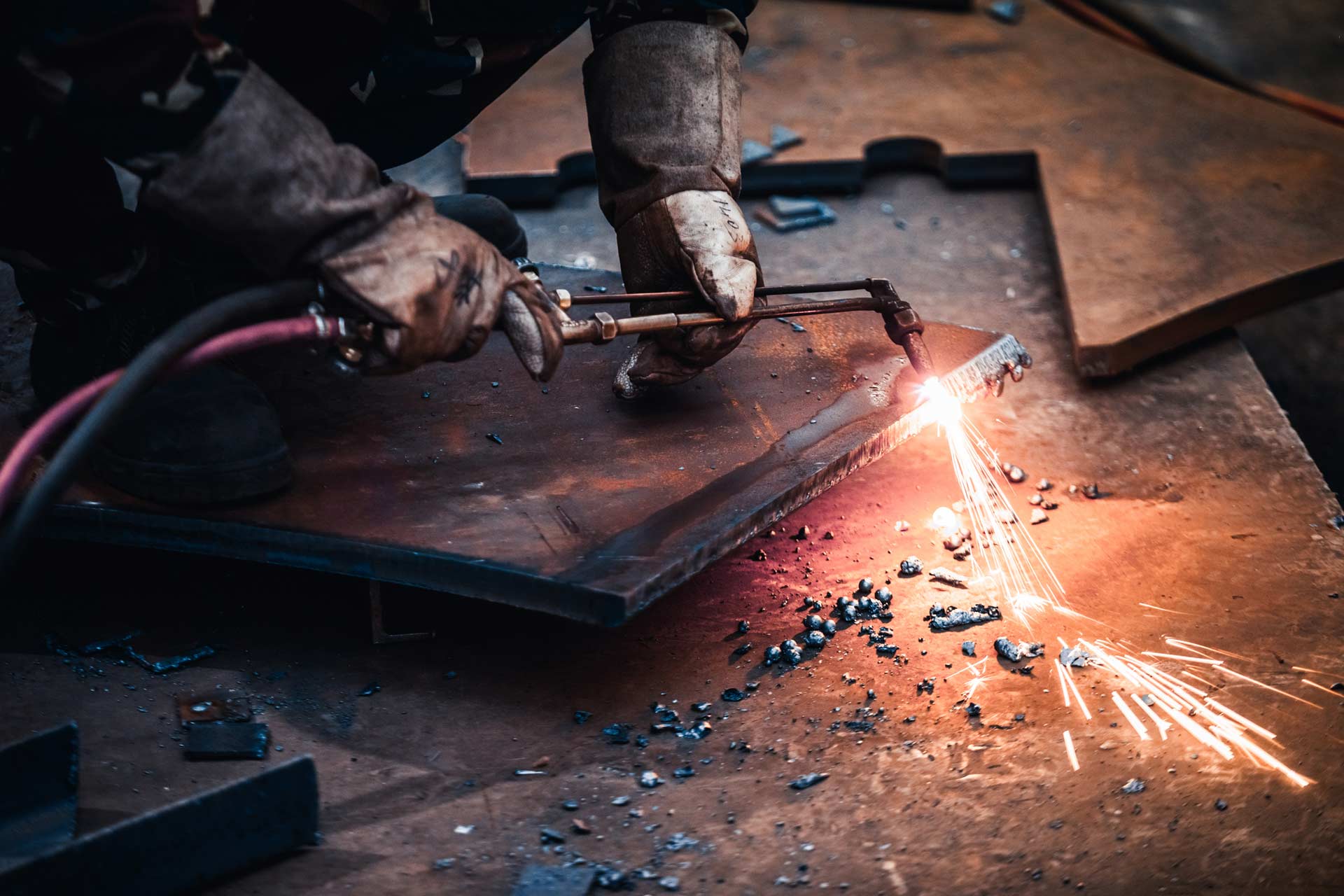Call Us Now!
Address: 837 S Kraemer Blvd. Placentia, CA 92870
Big Enough to Serve You & Small Enough to Know You.
Different Types of Metal Fabrication

Raw metal materials must undergo various metal fabrication techniques before they are ready for assembly and manufacture. Metal fabrication techniques vary, depending on the type and purpose of metal. Read on to discover common metal fabrication techniques.
Cutting
Cutting is a simple form of metalworking that has been around for many years. Although the process and concept of metal cutting are simple, manufacturers often use the process alongside other major fabrication techniques.
Generally, metal cutting requires specific tools like a work desk, metal specimen, and cutting equipment. The process encompasses the extraction of unwanted components from the network piece. Unwanted components can be ferrous or non-ferrous substances. After the removal of unwanted parts, the finished product can have applications in other systems and components.
Metal Stamping
Metal stamping is a technique that gives a specific shape to flat metal sheets. Stamping is a complicated process that encompasses multiple techniques, like piercing, bending, punching, and blanking. The process starts when you place flat sheet metal inside a stamping press. The press contains a die surface and a tool that compresses the metal into a specific shape.
For example, the press can emboss, coin, bend, or punch the metal into the required shape. The main stamping techniques are progressive die stamping, four-slide stamping, and deep draw stamping. You can also go for short-run metal stamping that uses minimal tools and is perfect for small projects.
Welding
Welding refers to fusing or combining metal pieces together. The combining process can use compression and/or heat. Most welders typically use an arc flame from an electric source to produce the heat. Commonly welded materials include stainless steel, mild steel, and aluminum.
Welders can use heat to weld metal pieces together. However, the process typically involves inserting melted filler metal into the spaces between the two metal pieces. The melted metal has the same melting point as the fused metals. Welders often use oxidation and other strategies to protect the melted metal. The welders can use a coated electrode material that generates shielding gas.
Metal Forging
Metal forging is the process in which a work piece or billet deforms plastically due to the application of compression force. Forging can occur in various temperature ranges, like isothermal, warm, cold, and hot. However, the forging of metal typically occurs at temperatures higher than the metal's recrystallization temperature.
Forging has been around for thousands of years, and evidence suggests that the method manufactured utensils, coins, and jewelry in 4,000 B.C. While the same forging concepts are popular today, the tools have changed over time. Nowadays, advanced mechanical presses and high-powered hammers are the main tools in the forging processes.
The process has applications in various industries and produces multiple machines like turbine routers, bolts, and gears.
Metal Casting
Metal casting involves putting molten metal into a mold to generate a specific metal component. The mold has a hollow cavity with a specific geometrical shape. Once the molten metal cools down, it will take the shape of a hollow cavity.
Metal casting involves several steps, such as patternmaking, mold making, metal melting and pouring, and post-processing. Generally, metal casting generates shapes and ingots. An ingot is a metal part with a specific shape that is meant for further processing.
Metal casting consists of many groups that depend on the design of the mold. The groups include composite mold and permanent mold. Each process requires specific tolerance, material, and quantity of metal.
Metal fabrication is a wonderful way to use metal in your next project. But since the process can be complicated and time-consuming, have a professional do the metal fabrication for you. Schorr Metals Inc. can help you get metals to use in your next fabrication project. We are also a fabricator that can design and construct products for you. Contact us to get started.
Email Address: info@schorrmetals.com
Call Us Now!
Business Hours:
Monday 7:30 am - 4:45 pm
Tuesday 7:30 am - 4:45 pm
Wednesday 7:30 am - 4:45 pm
Thursday 7:30 am - 4:45 pm
Friday 7:30 am - 4:45 pm
Saturday 7:30 am - 11:45 am
Licensed, Bonded & Insured




Address: 837 S Kraemer Blvd. Placentia, CA 92870
We Serve: Orange County, Los Angeles County, Riverside County, San Bernardino County in CA




